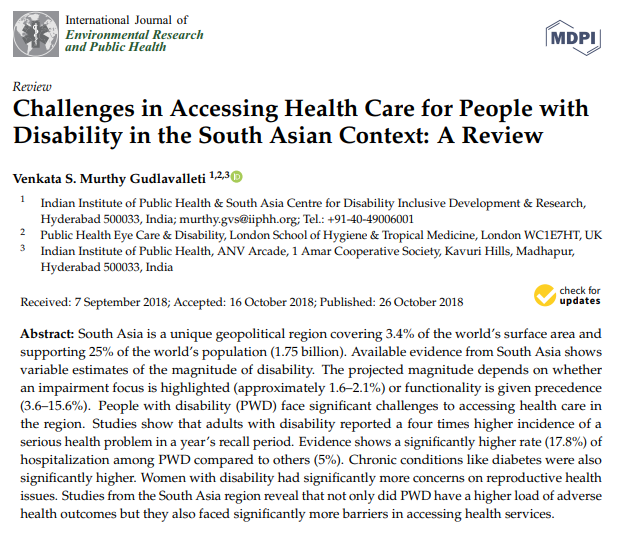Health Care for People with disability in the South Asian Context
South Asia is a unique geopolitical region covering 3.4% of the world’s surface area and supporting 25% of the world’s population (1.75 billion). Available evidence from South Asia shows variable estimates of the magnitude of disability. The projected magnitude depends on whether an impairment focus is highlighted (approximately 1.6–2.1%) or functionality is given precedence (3.6–15.6%). People with disability (PWD) face significant challenges to accessing health care in the region. Studies show that adults with disability reported a four times higher incidence of a serious health problem in a year’s recall period. Evidence shows a significantly higher rate (17.8%) of hospitalization among PWD compared to others (5%). Chronic conditions like diabetes were also significantly higher. Women with disability had significantly more concerns on reproductive health issues. Studies from the South Asia region reveal that not only did PWD have a higher load of adverse health outcomes but they also faced significantly more barriers in accessing health services.
Full text article available at:
https://www.ncbi.nlm.nih.gov/pmc/articles/PMC6265903/pdf/ijerph-15-02366.pdf


